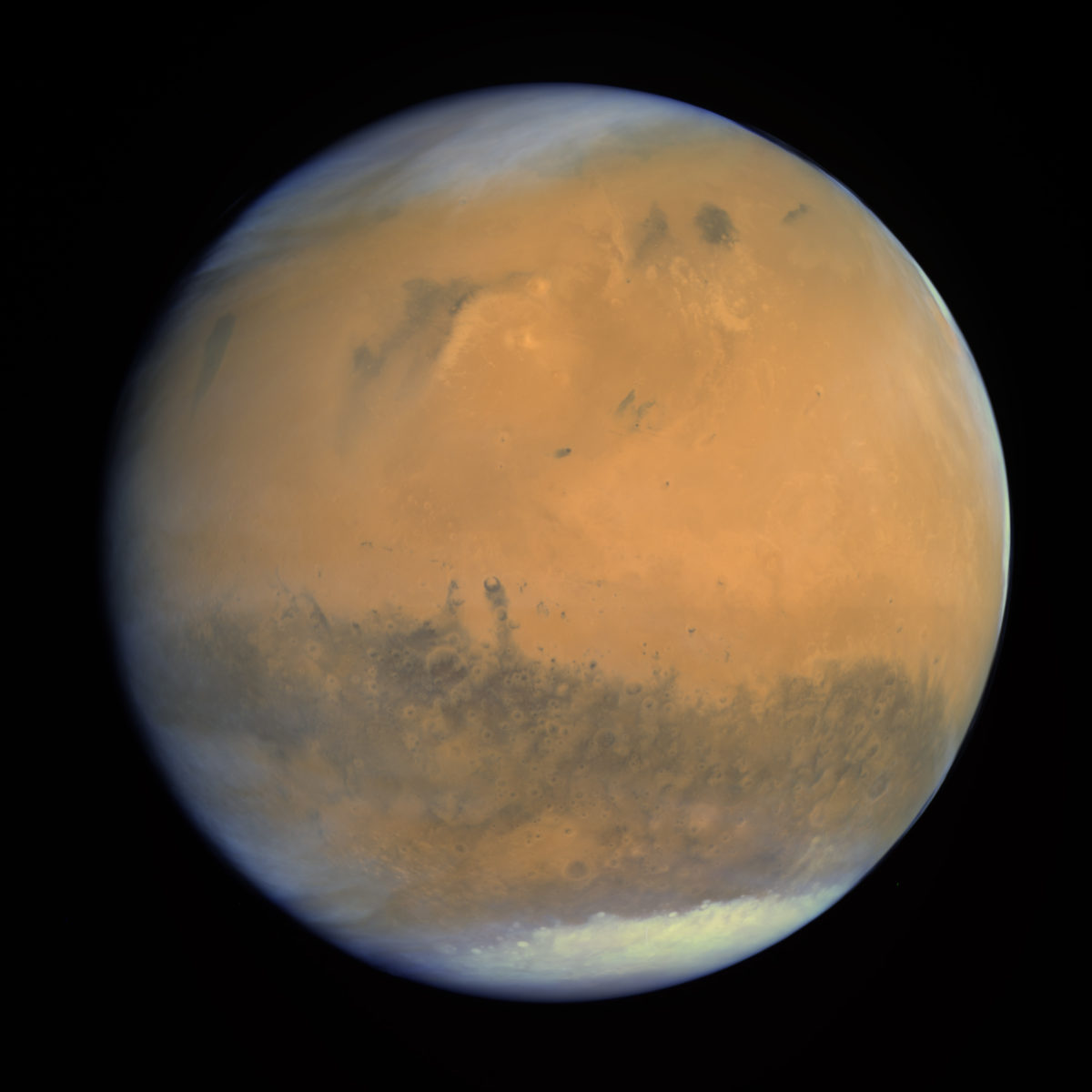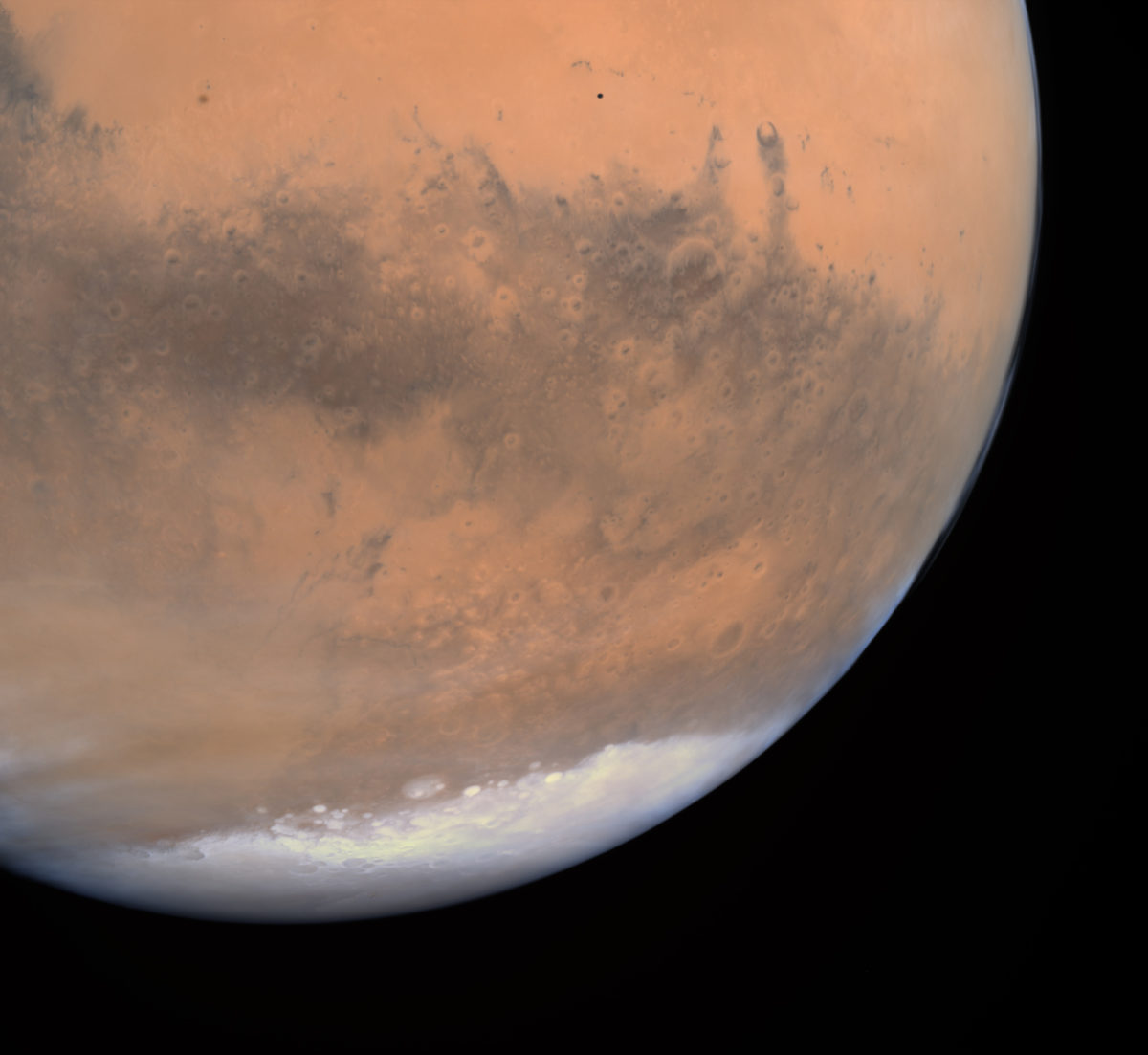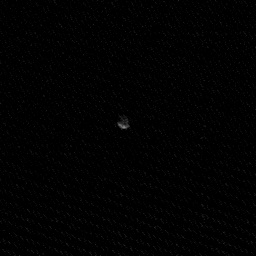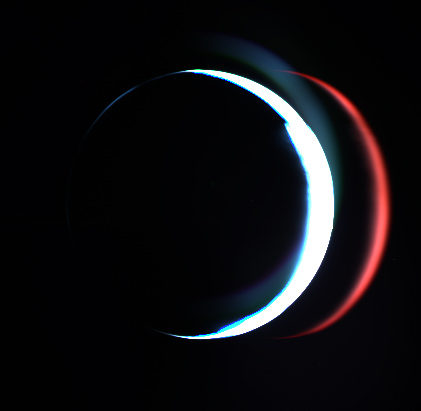Emily Lakdawalla • Jan 24, 2012
At last: Rosetta's Mars flyby photos have been released!
On February 24, 2007, the European Space Agency's Rosetta spacecraft passed by Mars, the second of four planetary gravity-assist flybys on its long route to a 2014 rendezvous with comet Churyumov-Gerasimenko. At the time, they released two photos from the main science camera, OSIRIS. One was a very pretty high-resolution view of Mars and the other a nifty little animation of Phobos flying over Mars.
We knew from the published Rosetta Mars flyby timeline that OSIRIS took a great many more pictures during that time, but no more OSIRIS images were ever released by ESA, until now. The OSIRIS principal investigator was notoriously tight-fisted with data, but he's now retired, and his replacement Holger Sierks has apparently unclogged the data pipeline. At the end of November, they suddenly released a huge quantity of data covering the first two (out of three) Earth flybys, the Mars flyby, and several sets of data from cruise periods between these encounters. Such riches! The data can be found on ESA's Planetary Science Archive, or at the Small Bodies Node of NASA's Planetary Data System.
I finally found some time yesterday to play with the images, and there are lots of cool things. First, here's my take on one of the two pictures they did release, the frame-filling photo that Rosetta took as it approached Mars. I love the clouds floating over the surface.

After that, Mars' apparent size grew larger than a single OSIRIS narrow-angle camera field of view. The team planned a very nice mosaic, imaging Mars in four quadrants through most of their different-color filters. But they did a tricky thing: they timed the mosaic to catch Phobos transiting the disk. Phobos appears four times, once in each of the four tiles. I wanted to assemble the full two-by-two-frame mosaic, but didn't manage to pull that off. Instead, here's one of the four quadrants. Phobos is near the top center.

There's actually a couple of other interesting things in this photo. Here's a map:

And then as Rosetta receded from Mars, it looked back at the planet at an extremely high phase, meaning that Mars was almost directly between the Sun and the spacecraft. The first observation Rosetta took from this point of view was a sequence of the receding crescent of Phobos. Here's one of those images (enlarged by a factor of two). It's in color, but color is hard to discern in such thin crescent photos.

As Rosetta got farther away, Phobos' crescent shrunk. There followed a series of images that looked like this one:

What's going on here? It's very noisy (snowy), which is (I think, but am not sure) due to the long exposure required. There's a dot in the middle of the image, and a streak across it. That streak is Mars' sunset twilight -- the Sun scattering through Mars' atmosphere, with the night side of the planet curving away to the lower right. That dot is Phobos, a barely lit crescent, with its night side visible because it's illuminated by Marslight.
The noise made these images a challenge, but they're such a beautiful moment that I had to give it a try. Here's my result, of a crescent, Marslit Phobos setting behind the Martian limb. It was hard to reduce the noise while preserving that Marslight on Phobos' nightside.

[If you're curious how I processed these, here goes: I copied and pasted the image over itself as a second layer. I applied a high-pass filter (Filters > Other > High pass) to the second layer, with a small radius (maybe 0.7 pixel). I set the mode of this layer to Subtract. Then I adjusted the output levels of this layer to a much lower value until I just started seeing the noise pop out of the background. I'd love to see someone else give these images a shot, because they're lovelier in concept than in reality.]
Then Rosetta was too far away from Mars to see Phobos anymore, and it returned to staring at the planet. Before the flyby, I had very high hopes for these crescent views of Mars. We have skinny crescent views of Earth and Venus and the giant planets, thanks to past flyby missions, but we don't have any such thing for Mars. When the crescent views weren't released, I was very disappointed. Well, there was a good reason they weren't released; most of them were very overexposed, as they were part of an observation to look for nightglow in Mars' atmosphere. Below is the best I could do with those images. The white crescent is Mars; the red one and the blue halo are internal reflections within the camera's optics. I like the little glowing bit of atmosphere at about eleven o'clock.

After this, Rosetta wasn't quite done. A few days later, it turned in quite a different direction and took this photo. See that little ball? It's Jupiter. You can just barely make out its tropical dark red belts. (This was well before the southern one faded in 2010.)

Now, this photo is nothing to write home about; even a toy telescope can produce this much detail on Jupiter. But there's something inexpressibly cool about this photo being taken from a spacecraft that was essentially at Mars. If you take a wider view and stretch the heck out of the contrast you can even spot all four of Jupiter's moons.

So many wonderful things in just one brief encounter! And I haven't even looked at any of the Earth flyby or cruise data yet. It's made me excited to see the whole Lutetia data set when it's finally released, and even more excited to see Rosetta's photos when it finally reaches the target it was meant to explore, in 2014.
The Time is Now.
As a Planetary Defender, you’re part of our mission to decrease the risk of Earth being hit by an asteroid or comet.
Donate Today

 Explore Worlds
Explore Worlds Find Life
Find Life Defend Earth
Defend Earth

